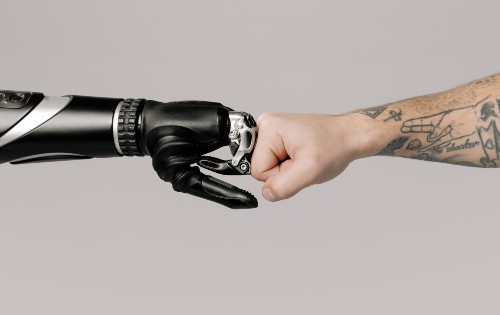Isn’t Machine Translation just Google Translate? I hear it’s really bad.
As far as the general public is concerned, Machine Translation is almost synonymous with Google Translate. Nigh every single soul on the face of the Earth has used this infamous tool at some point in their lives, often with some fun results, to say the least.
If it’s fun it can’t be that bad right? Well, that’s not really the case. The problem is that Google Translate has earned quite a bad reputation over the last few decades, before the development of its neural translation network, when the output was admittedly poor and oftentimes borderline hilarious. Things have improved massively since then, but public perception of this tool hasn’t really changed to the extent that it would inspire trust in people, and this is where our first major misconception about Machine Translation lies.

It’s all about the perceived quality of Machine Translation tools. Actual translators aren’t really the problem here (shockingly). It’s the general public that is pushing the “Machine Translation is bad” narrative, which makes perfect sense when you think about it. Most people either don’t translate on a daily basis or don’t have a proper grasp of computer-aided translation tools in order to be able to use Machine Translation properly.
They have probably only used Google Translate to translate some phrase or word, while completely ignoring the context in which it was written. Needless to say, this can lead to some gut-busting results that have a knack of almost always ending up on various meme sites for everyone to revel in their absurdity.
In reality, Machine Translation tools have come on leaps and bounds in the last 5 years or so. Their developers have long since begun to deviate from the more traditional rule-based or statistical approach, shifting their efforts in favour of the vastly superior neural network method.
As its name would suggest, the old Rule-based Machine Translation method was based on linguistic rules. This model was useful in certain situations but it would fail miserably as soon as it was faced with the vaguest shades of ambiguity or, God forbid, idiomatic meaning. It also required a tremendous amount of rules and exceptions for it to function properly.
On the other hand, the statistical approach was focused on gathering as much material as possible, which would then be multilingually aligned in order to create correspondences that formed a translation model. For simplicity’s sake, the statistical model basically compared existing source texts and their translations to build a bilingual database. It was considered superior to the rule-based approach as it generally worked fairly well for language pairs that are more closely related and for pairs with an abundance of good parallel data.
Nevertheless, both of these models pale in comparison with Neural Machine Translation. NMT doesn’t really replicate our cerebral activity, but simply uses a machine learning approach that is somewhat similar to how we think our brain works. Its output sounds more fluent and is significantly better at dealing with morphology and lexical selection.

Human translation is always the better choice

If humans had the ability to work around the clock without ever missing a beat and to produce results that are 100% consistent, you wouldn’t find many people disagreeing with this statement. However, as this is not the case, we simply have to rely on machines at least to some degree, which brings us to our next misconception about Machine Translation.
No human translator can hope to match the output of a Machine Translation tool in terms of the sheer volume of material it can deliver on a daily basis. We’re not talking about quality here, mind you. We will touch on that a bit later. Let’s focus on quantity first, an important aspect of translation that is often overlooked in discussions revolving around Machine Translation.
One of the more tedious byproducts of globalization is the steadily growing need to translate increasing amounts of content into other languages. You could say with confidence that no living person will ever lay their eyes on a large portion of this content, yet it needs to be translated. When quantity takes precedence over quality, Machine Translation reigns supreme. Its detractors can roll their eyes as much as they want, but there is simply no way for human translators to accomplish everything on their own when faced with a deluge of projects that require their time more than their expertise.
So no, an exclusively human translation is not always the best choice. It all depends on the circumstances of a specific project. Relying solely on machine translation when translating marketing slogans or ads might not be the best idea, that much is true.But not every translation project is a work of art. If your goal is to simply convert copious amounts of content into another language because your company policy or local legislation demands it, then Machine Translation with post-editing really is your best bet.
Rage against the Machine (Translation)
Ever since Machine Translation was introduced into our lives, an anti-automation sentiment has been growing amongst linguists and translators alike. Originally it was based around the idea that machines just don’t know how to translate, but ever since that argument went out of the window, the debate has taken a new and slightly more sour turn, and now revolves around the menacing theory that machines will eventually replace human translators in their entirety.
While it’s certainly true that Machine Translation will continue to play a major role in the language service industry, it would be foolish to think that it will ever completely replace human translators or render their services useless – far from it. Professional linguists are now needed more than ever, as the amount of content in need of translation is growing exponentially. What many machine translation critics don’t realize (or choose not to acknowledge) is that MT tools have been developed in order to help translators do their job more efficiently and not to undermine their career opportunities.
As far as the use of Machine Translation by language service providers is concerned, virtually every project that is at some point subjected to machine translation will be either post-edited or at the very least reviewed by a professional linguist. There are companies out there that offer only Machine Translation as a service, but they are still few and far between.
The bottom line is that you can’t really carry out a proper translation project without the intervention of a professional linguist. Instead of worrying about the machines “taking our jobs”, we should maybe focus on how to improve the symbiotic relationship between human translators and the big bad machine, which brings us to the last item on our list.

Unwelcome competition rather than an opportunity

The last of the misconceptions about Machine Translation we will talk about is the mindset that translators and other linguists should fight back automation in everything that is language-related, as to not desecrate the sanctity of their profession. This obsolete way of thinking has its roots in the educational system, as language programs at most universities have only recently started to include MT and CAT-tool courses in their curriculums.
Students are often told to be wary of machine translation tools, as they offer pre-translated solutions and impede the translator’s creative spark in doing so. To be perfectly honest, that is often the case.
That is why it is so important to start teaching the use of machine translation tools as early as possible to prepare future linguists for such traps and enable them to fare better once they actually begin working as professional translators, as they will inevitably be faced with machine translation sooner rather than later.
A good translator should know the limitations of Machine Translation and when to step in, and this is exactly what we should be aiming for – a balance between automation and human expertise.
The point we’re trying to make here is that rather than some kind of plague that will destroy the linguistic landscape forever, leaving the once beautiful profession in the hands of evil robots, Machine Translation should be seen as an opportunity. Everything will be alright, we just need to learn how to live in symbiosis with these fancy new tools and neural networks that we have developed.
translations quicker than ever before!
read more interesting content like this.






